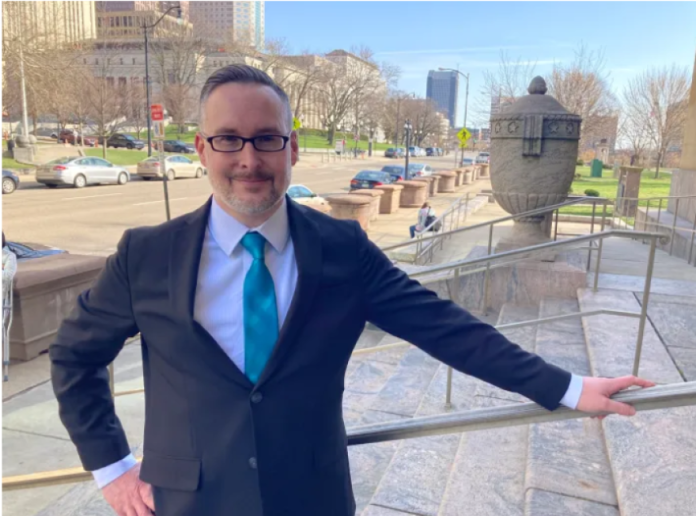An environmental group is suing to stop the US Forest Service from moving forward with a project that would clear 1,600 acres in Wayne National Forest, about two hours southwest of Pittsburgh. The case was heard this week in the US District Court for the Southern District of Ohio in Columbus.
The Sunny Oaks Project, spanning 25,000 acres of the Wayne, was first proposed by the Forest Service in 2018 to create young, bushy forest and plant a new oak crop. The project has a penchant for white oak and aims to contribute to the local economy through commercial timber harvesting.
In its lawsuit, the nonprofit Ohio Environmental Council alleges that the project will destroy older oak trees and are unlikely to regrow new oak trees, and that it violates Wayne’s 2006 forest plan.
The meaning of oak trees
Oak trees, particularly white oak, are used to make furniture and barrels for bourbon, an important industry in this region. Oak trees are considered ecological powerhouses, producing acorns that many birds, bears, and other species rely on, and are home to hundreds of species of insects.
However, a report by the White Oak Initiative, a collaborative project of industry and forestry groups, notes that white oaks could decline significantly over the next 10 to 15 years and could largely disappear from American forests in the coming decades.
The report cites various reasons for this, including climate change, invasive insects and diseases that make it difficult for oak seedlings to become mature trees.
The White Oak Initiative also points to a lack of proper forest conditions that white oaks need to grow. Young oaks root in the shade of taller trees but need sunlight to grow taller. Fire used to open the canopy and let sunlight onto the forest floor, but this was largely eliminated with European settlement of the area.
How the Sunny Oaks Project aims to help
The project involves logging 2,700 acres of the Wayne, with 1,600 acres clear-cut, meaning all of it must be cleared to open up the forest floor to more sunlight.
The forest service has declined interviews about the project because of the lawsuit.
According to agency video, clear-cutting would mean all trees would start at zero age, and that would give oak trees an advantage over other species to grow in this wooded area.
The Ohio Environmental Council lawsuit
Regrowing oak trees after clear-cutting only works when the oak trees already have well-established roots, according to OEC attorney and director of public lands Nathan Johnson, who worries the Forest Service doesn’t have the data to know.
“The problem is that this tree is really disappearing,” Johnson said. “It responds very poorly to clearcutting and other forms of heavy industrial wood. And something has to be done to protect this tree, whether it’s simply conserving it or finding better ways, more scientifically sound ways, to harvest some of it.”
In a federal court in Columbus on Monday, Johnson argued before Chief Justice Algenon Marbley that the agency was not following its own forest plan for the Wayne. The plan calls for the agency to maintain 12 loose-barked trees per acre, such as oaks and hickories, to provide habitat for endangered Indiana bats.
“Unfortunately, the Forest Service wanted so badly to misplace clearcuts and other cuts of a similar nature that they just took the standard and essentially threw it in the bin, which is highly unlawful from any perspective of the situation. Johnson said in an interview on the courthouse steps after the hearing.
Julie Grant
/
The Allegheny Front
Nathan Johnson, attorney and director of public lands for the Ohio Environmental Council, in the U.S. District Court for the Southern District of Ohio in Columbus.
Johnson argued in court that Forest Services’ decision to bare and not tend those 12 trees per acre was “arbitrary and capricious.”
Judge Marbley then turned to Justice Department attorney Paul Freeborne, representing the Forest Service, and asked why the agency had not amended the forest plan to avoid these claims.
Freeborne argued that there aren’t that many loose-barked trees in the project area, and he said the agency has the flexibility not to follow the standard.
A unique argument based on fungal networks
The Ohio Environmental Council brought up an issue that hasn’t received much attention in the courts in this case, arguing that the Sunny Oaks project would destroy what was the “Wood Wide Web” in parts of Wayne National Forest calls.
The Wood Wide Web refers to the mycorrhizal fungal network that communicates with trees underground. Johnson argued that the importance of these networks is now a well-established science.
“These mycorrhizal networks are particularly sensitive to clear cutting. So when the agency steps in and clears a white oak ecosystem, they not only destroy the trees, they destroy the soil that those trees depend on,” Johnson said.
Justice Department Freeborne responded that the Ohio Environmental Council raised this issue at the wrong time in the case, that for legal reasons the court should not consider this issue in deciding the case.
Finally, Judge Marbley noted that in his many years as a federal judge, he had never considered trees in a case and expressed his appreciation. He said a decision should be issued in 10 to 14 days.
Read more from our partners, The Allegheny Front.
www.wesa.fm
https://www.wesa.fm/environment-energy/2023-03-12/oak-trees-take-center-stage-at-a-federal-courthouse













